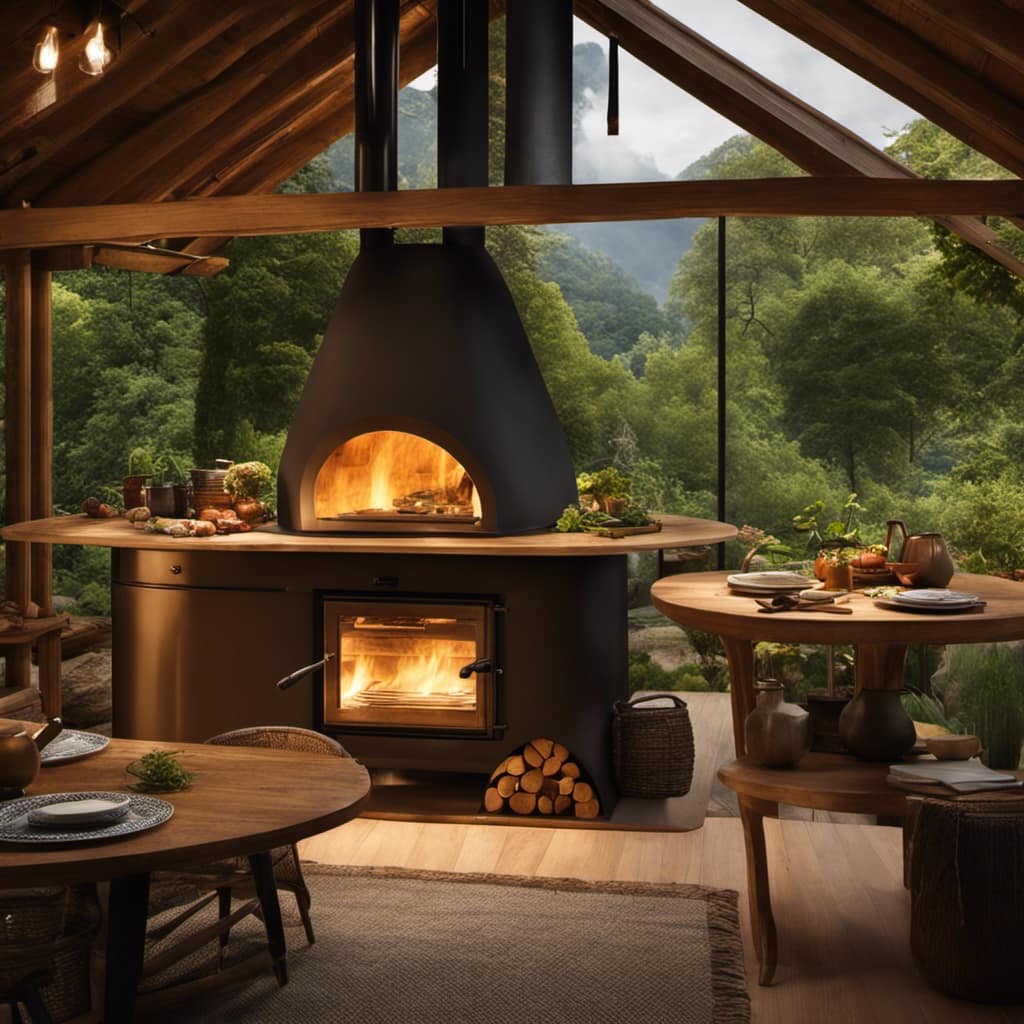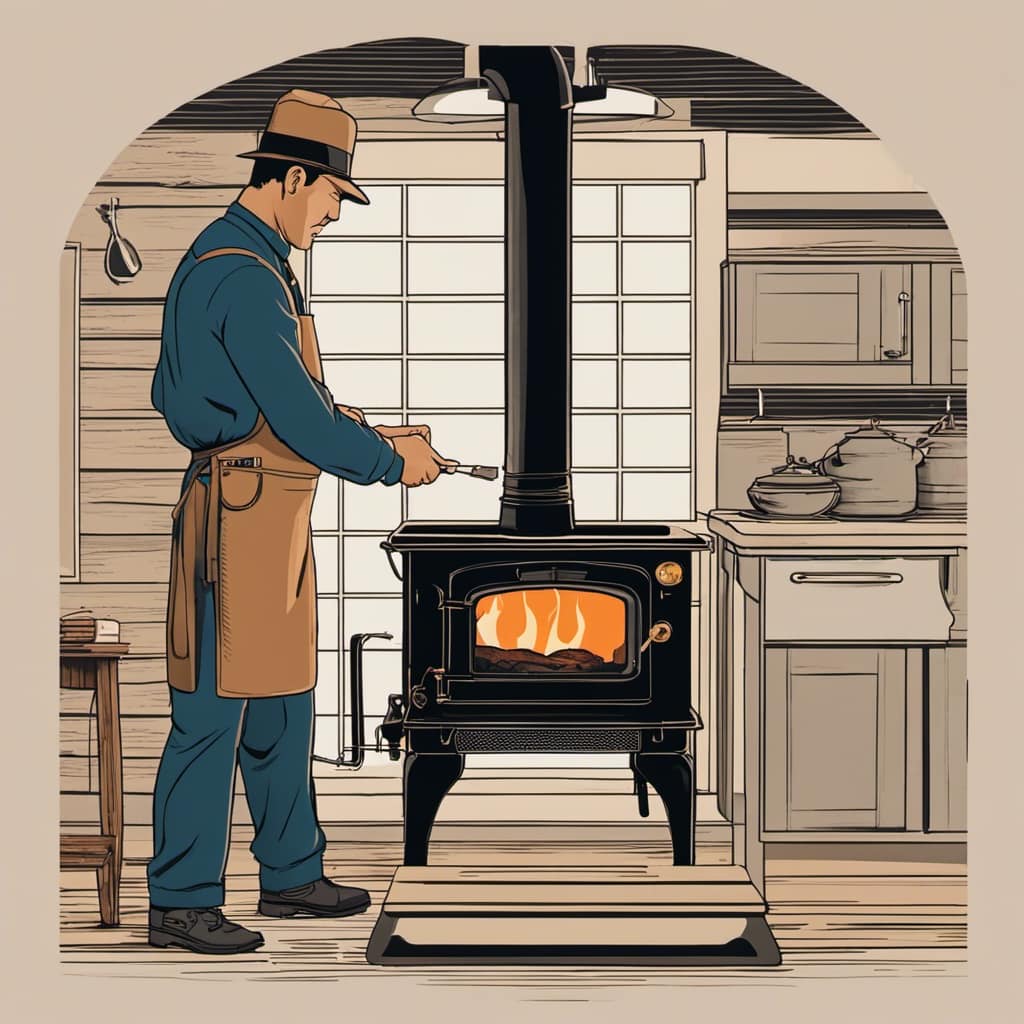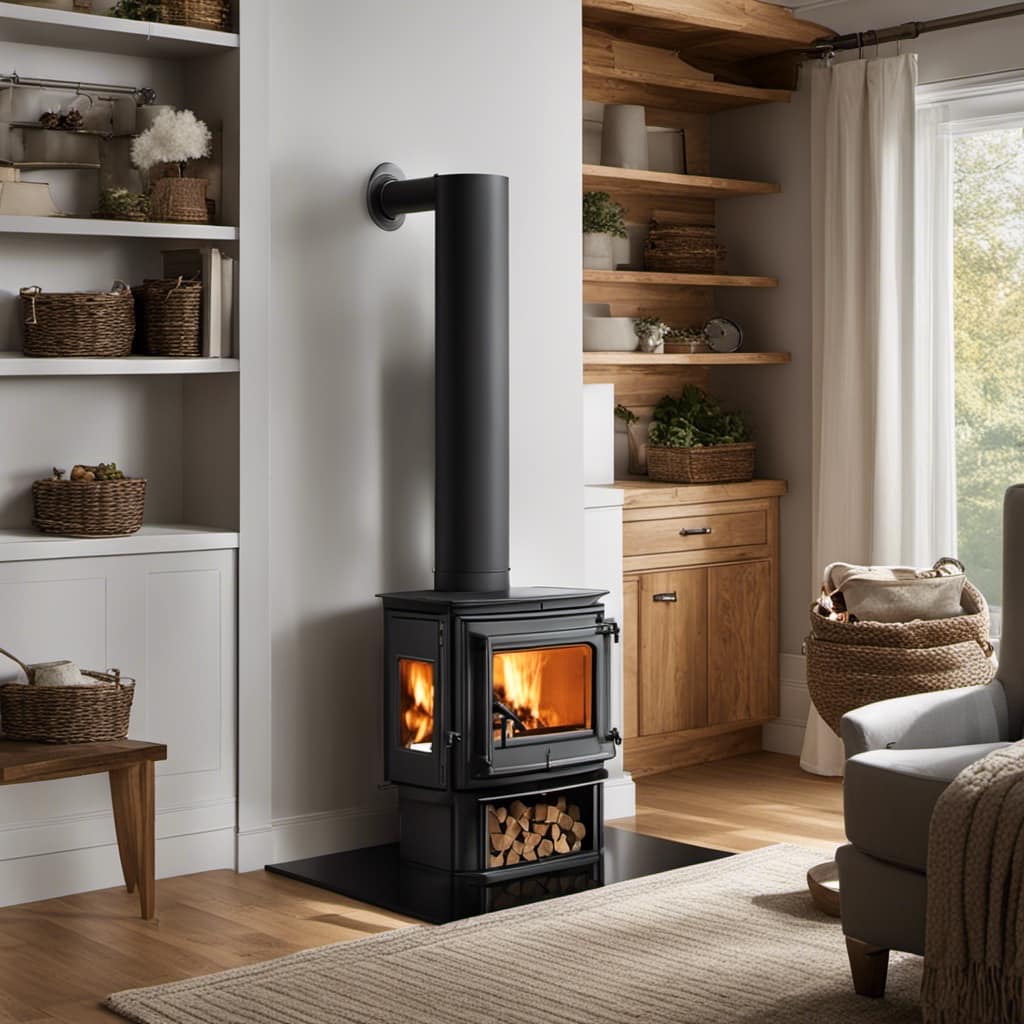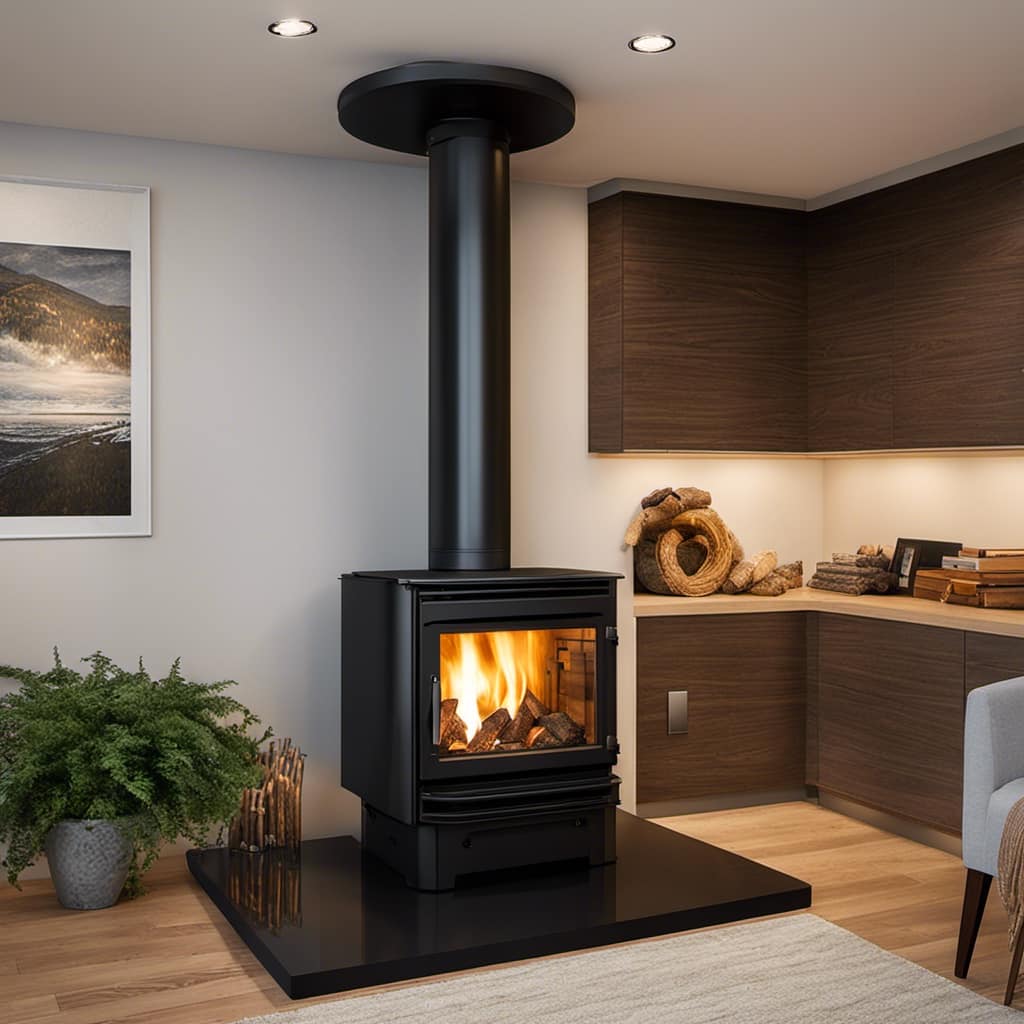While cleaning my wood stove, I am fascinated by the insights the ashes can provide about my burning habits.
Did you know that the color, texture, and amount of residue can reveal valuable insights?
It’s fascinating how these seemingly insignificant details can paint a picture of our burning practices.
In this article, we will explore the significance of residue and how it can help us make informed decisions to improve our wood burning experience.

Key Takeaways
- Color of the residue in the wood stove can indicate the efficiency of the combustion process and reveal the types of fuel being burned.
- The texture of the residue can provide clues about the efficiency of wood burning and impact the cleaning process.
- The amount of residue left behind can indicate burning habits and stove efficiency, with thick and heavy residue suggesting burning wet wood at low temperature.
- Consistency of the residue, determined by texture and color, is important in assessing burning habits, with powdery residue indicating complete combustion and sticky or clumpy residue suggesting wet wood or suboptimal stove operation.
The Color of the Residue
I wonder what the color of the residue in my wood stove tells me about my burning habits. Analyzing residue composition can provide valuable insights into the impact of burning materials.
The color of the residue can indicate the efficiency of the combustion process and the types of fuel being burned. For example, a light-colored residue suggests a cleaner burn with minimal impurities, such as dry wood or pellets.
On the other hand, a dark-colored residue may indicate the presence of pollutants or incomplete combustion, possibly from burning damp or unseasoned wood.
The Texture of the Residue
The residue in my wood stove feels gritty and rough, but it’s interesting to consider how the texture might relate to my burning habits. Here are three key insights that the texture of the residue can provide:

-
Residue buildup and efficiency: The texture of the residue can indicate how efficiently the wood is burning. If the residue feels thick and sticky, it suggests incomplete combustion and a lower efficiency. On the other hand, if the residue is powdery and fine, it indicates a more efficient burn with minimal waste.
-
Cleaning techniques and residue removal: The texture of the residue can also impact the cleaning process. Gritty and rough residue may require more aggressive cleaning techniques to remove, such as using a wire brush or scraper. Softer residue, on the other hand, may be easier to clean with a simple brush or vacuum.
-
Amount of residue left behind: The texture of the residue can give an indication of the amount left behind after burning. If the residue is thick and clumpy, it suggests that more wood is being burned and leaving significant residue. Conversely, if the residue is light and sparse, it indicates a cleaner burn with less leftover residue.
Considering the texture of the residue in my wood stove allows me to gain insights into my burning habits and make adjustments to improve efficiency and cleanliness.

The Amount of Residue Left Behind
When assessing the residue in my wood stove, it’s important to consider both the texture and the amount left behind. These factors can tell me a lot about my burning habits and the efficiency of my stove. A thick and heavy residue buildup indicates that I may be burning wood that is too wet or that I am not burning it at a high enough temperature. On the other hand, a light and powdery residue suggests that I am burning dry wood at a high temperature, resulting in a more efficient burn. To better understand the implications of different residue amounts, let’s take a look at the following table:
| Residue Amount | Burning Habits | Cleaning Techniques |
|---|---|---|
| Thick and heavy | Burning wet wood at low temperature | Regular cleaning with a chimney brush |
| Light and powdery | Burning dry wood at high temperature | Occasional cleaning to remove ash |
The Consistency of the Residue
One can determine the consistency of the residue by observing its texture and color. The residue composition and formation can provide valuable insights into our burning habits and the efficiency of our wood stove. Here are three key factors to consider when examining the consistency of residue:
-
Texture: Is the residue powdery, sticky, or clumpy? Powdery residue usually indicates a more complete combustion, while sticky or clumpy residue suggests that the wood may be wet or the stove isn’t operating optimally.
-
Color: Different colors of residue can provide clues about the burning conditions. A light gray or white residue may indicate a clean burn, while black or dark brown residue suggests incomplete combustion and the presence of impurities.

-
Amount: The quantity of residue left behind is also important. Too much residue can indicate poor burning habits or a poorly functioning stove, while minimal residue may indicate efficient burning.
Interpreting Residue Patterns
I can analyze residue patterns to better understand my burning habits and the efficiency of my wood stove. Residue patterns can provide valuable insights into the combustion efficiency of my wood stove. By closely examining the residue left behind after each burn, I can gain a better understanding of how efficiently my stove is burning the wood. This knowledge can help me make adjustments to improve the burn efficiency and reduce the amount of waste produced.
To illustrate the importance of residue patterns, let’s consider a simple table:
| Residue Pattern | Burn Efficiency |
|---|---|
| Thick and black | Low |
| Thin and gray | Medium |
| Absent | High |
| Sticky and wet | Inefficient |
By analyzing the residue pattern, I can determine the level of burn efficiency. Thick and black residue indicates a low burn efficiency, while thin and gray residue suggests a medium efficiency. If the residue is absent, it indicates a high burn efficiency. Finally, sticky and wet residue indicates an inefficient burn, possibly due to using damp wood or poor airflow.

Understanding residue patterns is crucial in analyzing combustion efficiency and improving the performance of my wood stove. By making adjustments based on the residue patterns, I can ensure a more efficient burn and reduce environmental impact.
Frequently Asked Questions
How Often Should I Clean the Residue From My Wood Stove?
I clean the residue from my wood stove every month. The frequency of cleaning depends on how often I use it. The residue composition can indicate if I am burning the right type of fuel and if I am burning efficiently.
Can the Residue in My Wood Stove Affect the Efficiency of the Burning Process?
The residue in my wood stove can impact the efficiency of the burning process and worsen air quality. To reduce buildup, I should use seasoned firewood, ensure proper airflow, and regularly clean the stove.
Are There Any Safety Concerns Associated With the Residue in My Wood Stove?
There are potential health risks associated with the residue in a wood stove. Breathing in the particles can cause respiratory issues. Additionally, the environmental impact of the residue includes air pollution and the release of harmful chemicals.

Does the Type of Wood I Use Affect the Residue Left Behind in My Wood Stove?
The moisture content of the wood and the combustion temperature can both affect the residue left behind in the wood stove. Higher moisture content and lower combustion temperatures can result in more residue buildup.
Can the Residue in My Wood Stove Indicate Any Potential Problems or Issues With My Burning Habits?
The residue analysis in my wood stove can provide valuable insight into my burning habits. It can reveal if I am using the right type of wood and if I am properly maintaining the stove. Additionally, it can indicate the environmental impact of my burning habits on air quality and pollution levels.
Conclusion
In conclusion, the residue in your wood stove can provide valuable insights into your burning habits. By examining the color, texture, amount, and consistency of the residue, you can determine if you’re burning efficiently or wasting energy.
One interesting statistic is that a study found that 75% of the residue left behind in wood stoves is a result of incomplete combustion, indicating the need for adjustments in burning techniques to improve efficiency and reduce pollution.

Growing up surrounded by the vast beauty of nature, Sierra was always drawn to the call of the wild. While others sought the comfort of the familiar, she ventured out, embracing the unpredictable and finding stories in the heartbeat of nature.
At the epicenter of every remarkable venture lies a dynamic team—a fusion of diverse talents, visions, and passions. The essence of Best Small Wood Stoves is crafted and refined by such a trio: Sierra, Logan, and Terra. Their collective expertise has transformed the platform into a leading authority on small wood stoves, radiating warmth and knowledge in equal measure.











